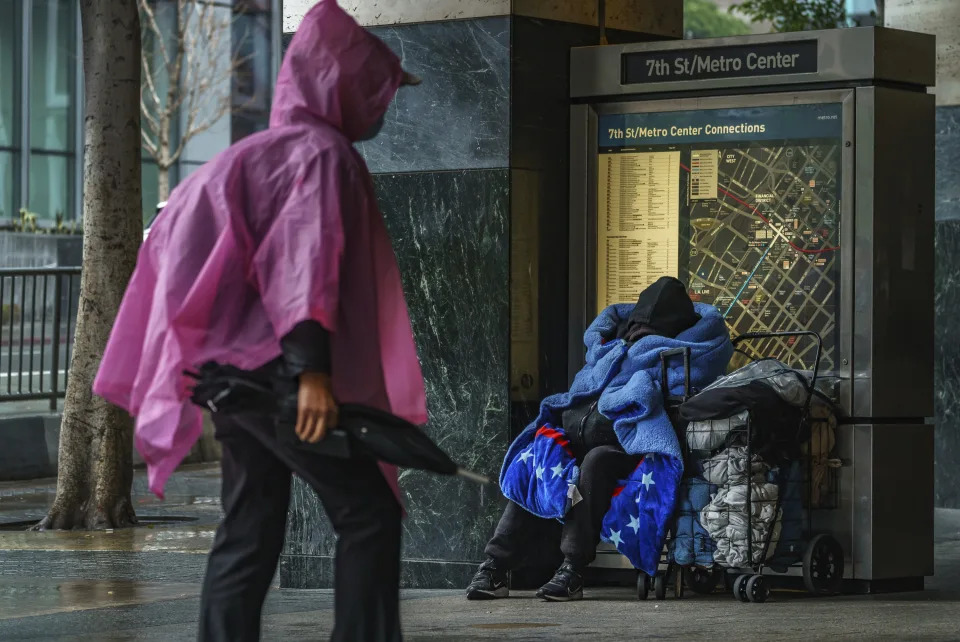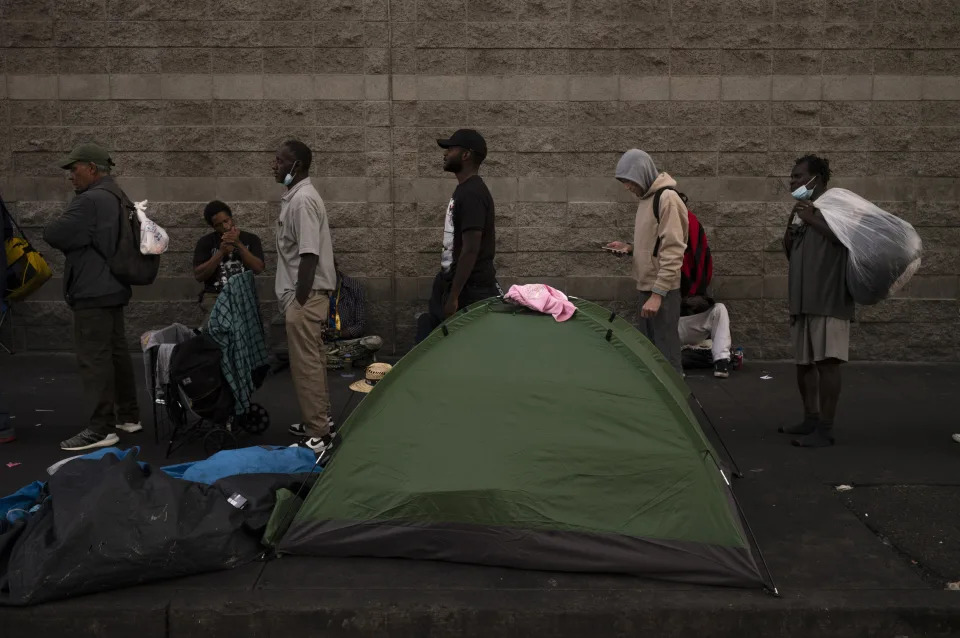Olympics: France says rail lines repaired after sabotage
Arson attacks paralyzed the French rail network, hours before the Olympics opening ceremony on Friday. Rail operator SNCF says most trains are now running again without delay.
French national train operator SNCF said Sunday that repairs have been completed on the country's rail network, caused by several arson attacks on the first day of the 2024 Paris Olympics.
"Thanks to the exceptional efforts of SNCF Network staff, who worked non-stop since Friday morning, repairs are now fully completed on all the high-speed rail services affected by the sabotage attacks," SNCF said.
"Tests have been conclusive and the train lines can now function as normal," the operator said, adding that there would be no more disruption from Monday morning.
On the route between Paris and the southwest, practically all the scheduled trains were said to be running again, according to the rail operator.
From Paris heading north, three out of four scheduled trains were running with no delays, SNCF said.
The eastbound line from Paris has been back in regular service since Saturday.

What do we know about the vandalism?
Three arson attacks overnight into Friday severely disrupted rail traffic as dignitaries, athletes and fans were due to arrive for the opening ceremony of the Olympic Games.
The saboteurs targeted the high-speed TGV lines Atlantique, Est and Nord, which run from Paris to Bordeaux, Strasbourg and Lille respectively. Maintenance workers thwarted a fourth attack.
The Nord line also carries Eurostar trains between the French capital and London and Brussels.
Around 800,000 passengers were affected by delayed and canceled train services on Friday and Saturday, according to SNCF, including commuters and holidaymakers.
July and August are the peak vacation months in France.
Who was behind the act of sabotage?
Investigators still do not know who was behind the attacks or if they were timed to disrupt the Olympics.
According to Le Parisien newspaper, the arson attacks could have been carried out by radical left-wingers.
Several French and international media outlets received a letter with references to the far-left, claiming responsibility for the sabotage incidents and saying their motive was to disrupt the Games, the newspaper said.
Investigators are now looking into whether it was a genuine confession or a false claim.
Others have questioned whether Russia sought to cause embarrassment and disruption to the Games.
Police in Paris arrested a Russian national this week, saying he was suspected of "organizing events likely to lead to destabilization during the Olympic Games."
Interior Minister Gerald Darmanin told broadcaster France 2 on Saturday that a "number of findings" had raised confidence that authorities would "know fairly quickly who is responsible."
mm/wd (AFP, dpa)
Arson attacks paralyzed the French rail network, hours before the Olympics opening ceremony on Friday. Rail operator SNCF says most trains are now running again without delay.
French national train operator SNCF said Sunday that repairs have been completed on the country's rail network, caused by several arson attacks on the first day of the 2024 Paris Olympics.
"Thanks to the exceptional efforts of SNCF Network staff, who worked non-stop since Friday morning, repairs are now fully completed on all the high-speed rail services affected by the sabotage attacks," SNCF said.
"Tests have been conclusive and the train lines can now function as normal," the operator said, adding that there would be no more disruption from Monday morning.
On the route between Paris and the southwest, practically all the scheduled trains were said to be running again, according to the rail operator.
From Paris heading north, three out of four scheduled trains were running with no delays, SNCF said.
The eastbound line from Paris has been back in regular service since Saturday.

Hundreds of thousands of rail passengers were stranded across France on FridayImage: Olivier Lejeune/MAXPPP/dpa/picture alliance
What do we know about the vandalism?
Three arson attacks overnight into Friday severely disrupted rail traffic as dignitaries, athletes and fans were due to arrive for the opening ceremony of the Olympic Games.
The saboteurs targeted the high-speed TGV lines Atlantique, Est and Nord, which run from Paris to Bordeaux, Strasbourg and Lille respectively. Maintenance workers thwarted a fourth attack.
The Nord line also carries Eurostar trains between the French capital and London and Brussels.
Around 800,000 passengers were affected by delayed and canceled train services on Friday and Saturday, according to SNCF, including commuters and holidaymakers.
July and August are the peak vacation months in France.
Who was behind the act of sabotage?
Investigators still do not know who was behind the attacks or if they were timed to disrupt the Olympics.
According to Le Parisien newspaper, the arson attacks could have been carried out by radical left-wingers.
Several French and international media outlets received a letter with references to the far-left, claiming responsibility for the sabotage incidents and saying their motive was to disrupt the Games, the newspaper said.
Investigators are now looking into whether it was a genuine confession or a false claim.
Others have questioned whether Russia sought to cause embarrassment and disruption to the Games.
Police in Paris arrested a Russian national this week, saying he was suspected of "organizing events likely to lead to destabilization during the Olympic Games."
Interior Minister Gerald Darmanin told broadcaster France 2 on Saturday that a "number of findings" had raised confidence that authorities would "know fairly quickly who is responsible."
mm/wd (AFP, dpa)
GREEN ANARCHISTS
By AFP
July 27, 2024

The Paris Montparnasse train station was packed with desperate passengers after 'sabotage' attacks on the rail network paralysed services ahead of the opening of the Olympic Games. — © AFP
Traffic on three major French high-speed train lines remained disrupted Saturday, a day after saboteurs paralysed much of the rail network ahead of the Olympic Games opening ceremony in Paris.
Seven out of 10 trains will run Saturday on the three key routes with delays averaging one to two hours, the state railroad SNCF said.
Kathleen Cuvellier, speaking in the northern city of Lille, said her journey to Avignon in the south was going to be “hell” now.

Up to 800,000 passengers could be affected by the sabotage – Copyright AFP/File Mandel NGAN
Cuvellier, travelling with her two-year-old son, said she now had to take a slower train to Paris to take another one for Avignon, adding: “The travel time was four hours and now it’s going to be seven”.
Cecile Bonnefond, whose train from Lille to the western city of Nantes was cancelled, added: “One doesn’t have any choice”.
There was no immediate claim of responsibility for the coordinated overnight arson attacks on cabling boxes at junctions strategically picked out north, southwest and east of the French capital where the Olympics opening ceremony was staged on Friday night.
Traffic will remain disrupted into Sunday on the northern line running to Lille and Brussels, but should gradually improve on the Atlantic route to Brittany and the south-west, the SNCF said.

Rail employees and investigators inspect the scene of an attack on the high speed railway network in northern France — © AFP Denis CHARLET
The eastern line to Strasbourg and Germany had largely returned to normal.
Rail workers thwarted an attempt to destroy safety equipment on a fourth line to the Mediterranean in what the SNCF rail company called a “massive attack”.
The SNCF said “agents worked all night under difficult conditions in the rain to allow improved traffic on high-speed lines affected by the acts of sabotage.”
The coordinated attacks staged at 4:00 am (0200 GMT) early Friday cut and burned fibre optic cables running along the tracks that transmit safety information to train drivers.
The attacks were well prepared and carried out by the same organisation, a source close to the investigation said.
SNCF estimated that about 250,000 passengers were affected on Friday. Junior transport minister Patrice Vergriete said 800,000 could face the fallout over the three days.
Many travellers were on their way to the French capital for the start of the Olympics, while others were hoping to travel in the opposite direction to start their summer holidays.
“Customers will be contacted by text message and email to confirm the running of their trains,” the SNCF said.


 The Brazilian Amazon recorded its worst February for deforestation in 2023 – Copyright POOL/AFP Stanislav Kogiku
The Brazilian Amazon recorded its worst February for deforestation in 2023 – Copyright POOL/AFP Stanislav Kogiku Burnt trees are seen after illegal fires were lit by farmers in Manaquiri, Amazonas state in September 2023 – Copyright GETTY IMAGES NORTH
Burnt trees are seen after illegal fires were lit by farmers in Manaquiri, Amazonas state in September 2023 – Copyright GETTY IMAGES NORTH















